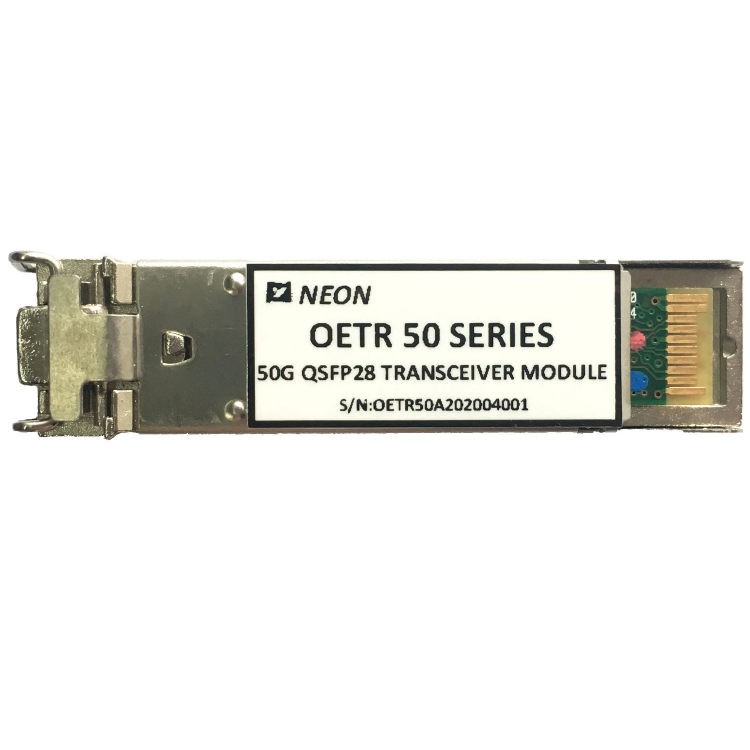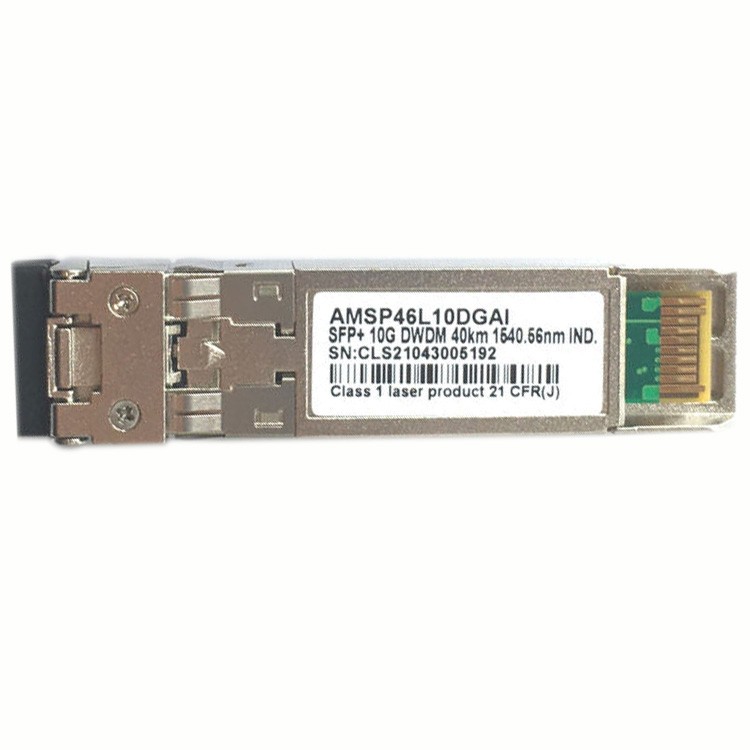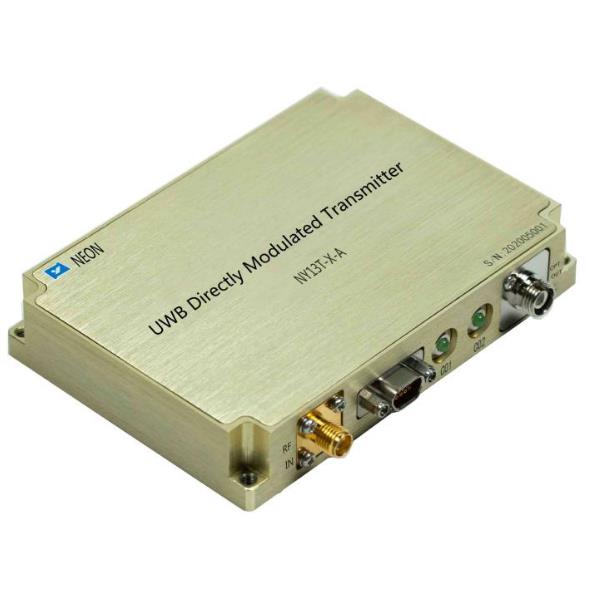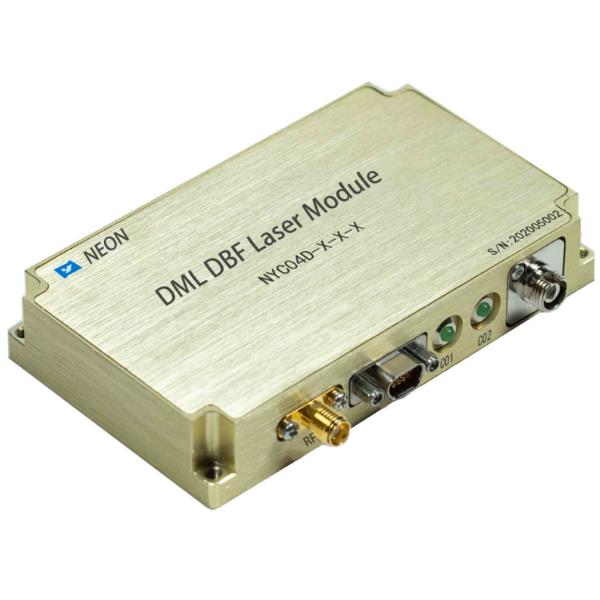QSFP+ Transceiver: What You Need to Know?
With the highly dynamic information age, network data traffic expansion is much higher compared to what once was. Whether it is big data centers, cloud platforms, or telecommunications backbone networks, there exists a need for fast and stable transmission solutions.
Among all the optical transceiver standards, QSFP+ transceiver is a key building block for 40G network development with its high density, energy efficiency, and flexibility. In this post, let’s find out more about QSFP+ transceiver!
Part 1. What is a QSFP+ Transceiver?
A QSFP+ (Quad Small Form-Factor Pluggable Plus) transceiver is a high-speed optical communication module designed for 40G network transmission. While its form factor looks similar to traditional SFP optical transceiver and SFP+ modules, QSFP+ delivers a significant leap in data rate and capacity. Due to its compact size, high port density, and broad compatibility, it has become a key component in data centers, enterprise networks, and telecom infrastructure.
Every one of the four parallel channels in QSFP+ transceivers transmits data at 10Gbps to offer a maximum bandwidth of 40Gbps – most suitable for high-speed interconnects, mass network upgrades and cloud infrastructures. Because they blend performance efficiency and scalability so optimally, these transceivers remain one of the most widely employed solutions in modern 40G networks.
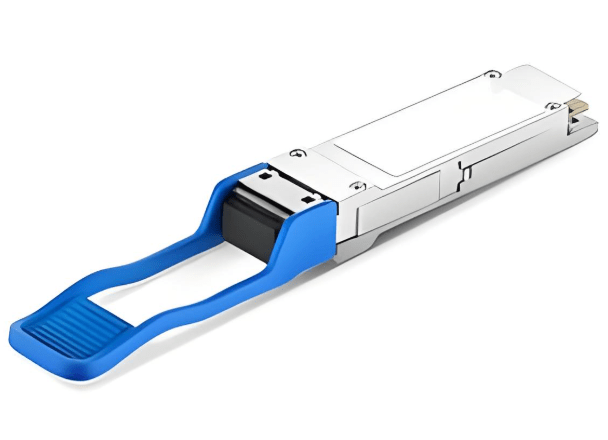
Part 2. How Does a QSFP+ Transceiver Work?
QSFP+ transceivers serve a key purpose in data transmission over fiber optic links: they convert between electrical signals and optical signals for fast data transfer across network devices.
As soon as network devices send data, their QSFP+ modules convert electrical input signals into optical ones which are then transmitted over fiber; in turn, receiving devices have modules that perform the opposite function – they convert received optical signals back into electrical ones so their devices can interpret it.
Key features of QSFP+ transceivers include:
Data Rate: QSFP+ can handle up to 40Gbps total bandwidth, delivered through four parallel lanes each operating at 10Gbps, making it an ideal solution for large-scale high-performance networking.
Interfaces: MTP/MPO connectors, typically found in short reach applications with high density environments; and LC duplex connectors used for longer reach connections that use less fibers are among the more frequently encountered interface types.
Transmission Distance: Depending on the transceiver type, transmission distance can range anywhere from 100 meters with multimode fiber (such as QSFP+ SR4) up to 40 kilometers for single mode fiber (such as QSFP+ ER4) allowing QSFP+ modules to be deployed for short reach intradata center links as well as long haul telecom backbones.
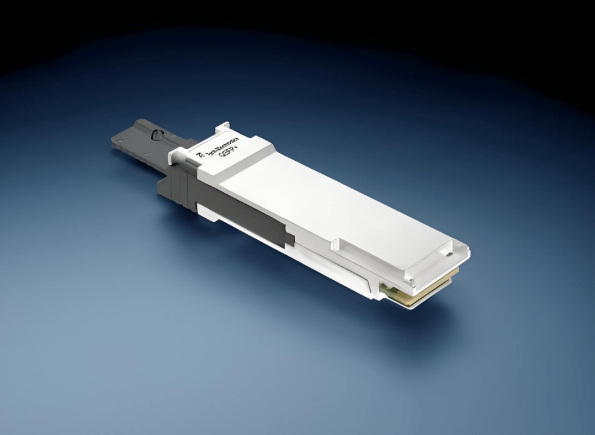
Part 3. Main Types of QSFP+ Transceivers
QSFP+ transceivers come in various variants to meet various networking requirements. Each type is optimized for specific transmission distance, fiber type and application scenarios – these typically include:
QSFP+ SR4 (Short Range)
Created specifically to provide short distance transmission, QSFP+ SR4 modules typically use multimode fiber (OM3/OM4). Their reach extends up to 100 meters with OM3 fiber or 150 meters when used with OM4, making them well suited for intradata center connections such as connecting servers, switches, and storage devices within a data center environment.
Due to their cost-effectiveness and simplicity, these SR4 modules have become extremely popular within high density data center environments.
QSFP+ LR4 (Long Range)
Built for long-distance connections, QSFP+ LR4 modules operate over single-mode fiber and can transmit data up to 10 kilometers. They are most often implemented in data center interconnects, campus, or as a building-to-building link, where extended-reach high-reliability performance is required.

QSFP+ ER4 / ZR4 (Extended/Ultra-Long Range)
For even greater lengths, QSFP+ ER4 modules support reaches of up to 40 kilometers, and ZR4 modules have even greater reaches. These modules are typically deployed in telecom backbone networks, metropolitan area networks (MANs), and carrier-grade environments, where ultra-long-reach optical transmission is essential.
QSFP+ DAC (Direct Attach Copper) & AOC (Active Optical Cable)
DAC: The cheapest solution for very short-reach connections (most often 1–7 meters), DACs are transceiver termination with copper cabling built-in as a passive option. They are utilized for attaching gear in the same rack since they are inexpensive and use minimal power.
AOC: Active Optical Cables are more pliable and less heavy compared to DACs, with a transmission of up to tens of meters. They can handle cable in a better way in high-density server rooms and can be utilized where DACs are not long enough and the optical transceivers will be costly.
Part 4. QSFP+ vs. QSFP28: What’s the Difference?
It’s common for users to confuse QSFP+ (40G) and QSFP28 (100G) modules, since they share a similar physical form factor. However, their performance and application scenarios are quite different:
| Feature | QSFP+ | QSFP28 |
| Maximum Data Rate | 40Gbps | 100Gbps |
| Per-Channel Rate | 10Gbps (4 × 10G) | 25Gbps (4 × 25G) |
| Application | 40G data centers, HPC, aggregation | 100G core networks, backbone, DCI |
| Interface | Same physical form factor, but not interchangeable at speed | Compatibility must be verified |
QSFP+ modules are widely used in 40G data center networks and high-performance computing (HPC) clusters, while QSFP28 modules have become the mainstream choice for 100G core networks and telecom backbones, supporting much higher throughput.
QSFP28 technology has also advanced to support interim solutions for 50G networks, such as the NEON OETR 50 Series – QSFP28 50G 10km SM PAM4 BIDI Transceiver from PAM4. This product utilizes PAM4 modulation technology for 10-km transmission over single mode fiber while remaining compliant with MSA and IEEE802.3cd standards – providing cost-effective upgrade paths from 40G to 100G infrastructure without immediately rolling it out completely.
QSFP28’s versatility makes it the go-to solution for today’s 100G deployments as well as future plans to upgrade networks to 200G or 400G architectures.

Part 5. Applications of QSFP+ Transceivers
QSFP+ transceivers are highly versatile and a key element in the majority of network setups. Their capability to transmit data at high speed of 40Gbps with low power consumption and compact size, coupled with other advantages, makes them the first choice in the following contexts:
Data Centers
QSFP+ modules are widely utilized for switch-to-switch and server-to-switch connections in modern data centers, providing high bandwidth east-west traffic that supports applications like virtualization, big data analytics and storage networking. Through various QSFP+s (SR4, LR4, DAC or AOC), operators can match performance with cost to match any given rack configuration or between data halls.
High Performance Computing (HPC)
HPC clusters involving thousands of nodes require communication with extremely low latency and throughput for optimal operation, QSFP+ offers the scalable parallel connectivity required for massive computational workloads ensuring seamless data exchange for scientific research, engineering simulations and AI model training.
Telecom and Backbone Networks
LR4 and ER4 QSFP+ modules are utilized by communications operators to build metropolitan area networks (MANs) of high capacity and backbone links. Through their long-haul transmission distance of up to 40 km, operators can offer reliable, high-speed services within a city or regional networks.
Cloud Computing Platforms
Large-scale cloud providers rely on QSFP+ transceivers to support data transfer between servers, storage systems, and access networks. With the rapid growth of cloud services, QSFP+ helps ensure that underlying network fabrics deliver the bandwidth, flexibility, and reliability needed for scalable and secure cloud operations.

Part 6. How to Choose the Right QSFP+ Module?
Selecting an ideal QSFP+ transceiver requires careful consideration of distance, price, compatibility and growth factors. Some key points that will ensure making the appropriate choice:
Transmission Distance
Within a data center: For short-reach connections between servers, switches or storage, SR4 modules or DAC cables often suffice as cost-effective connectivity solutions that meet high density intra-rack or inter-rack link requirements.
Data centers or campus networks: When connecting over long distances, LR4 or ER4 modules should be considered. While LR4 supports up to 10 km distances, their counterpart ER4 models can extend that reach as far as 40km – making them suitable for interbuilding or intersite connections with an eye toward budget considerations.
Budget Considerations
Cost-Effective Solutions: DAC and AOC cables are economical options with minimal power consumption; making them suitable for short range deployments.
Higher performance options: The more expensive LR4 and ER4 modules offer long distance coverage and robust network performance.
Compatibility
Always check compatibility with your network equipment vendors such as Cisco, Huawei, Arista, Juniper, etc.
Consider third-party compatible QSFP+ modules as an alternative—they often provide comparable performance at a better price point, helping reduce overall network deployment costs.
Future Scalability
If you plan to upgrade your network to 100G in the near future, it’s wise to select devices and QSFP+ modules that can easily transition to QSFP28. This ensures smoother network upgrades without replacing the entire infrastructure.
By carefully weighing these factors, enterprises can choose QSFP+ modules that balance cost, performance, and long-term network needs, ensuring a reliable and scalable high-speed network infrastructure.
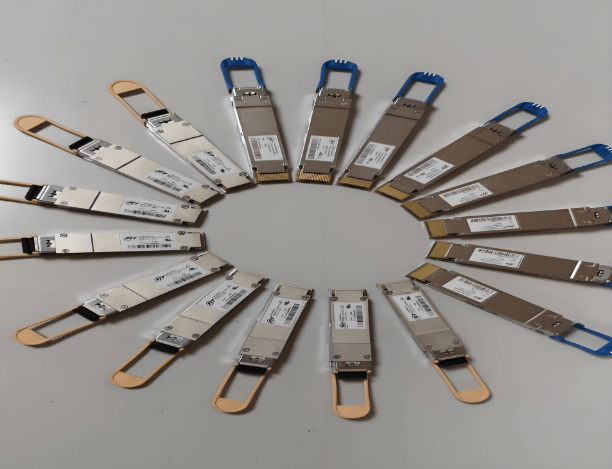
In Conclusion
As one of the primary solutions for 40G optical networks, QSFP+ transceivers possess high density, low power consumption, and good compatibility, and therefore are used extensively in data centers, telecommunication networks, and enterprise networks. For short-reach SR4 and long-reach LR4/ER4 links, QSFP+ modules are preferred solutions to meet the demands for multiple networking applications.
For organizations that continue to operate 40G networks, QSFP+ is a mature and proven solution. For organizations that want to move progressively to higher speeds, the NEON optical transceiver offers a compelling alternative. With its high-performance, long-reach transmission, and low-power consumption, it offers a cost-effective solution for network transformation.



